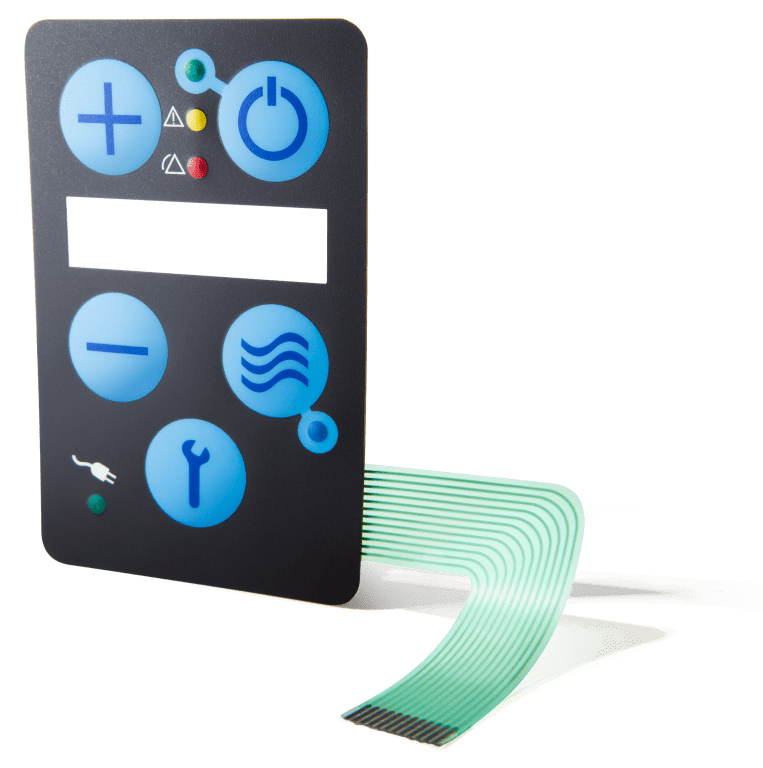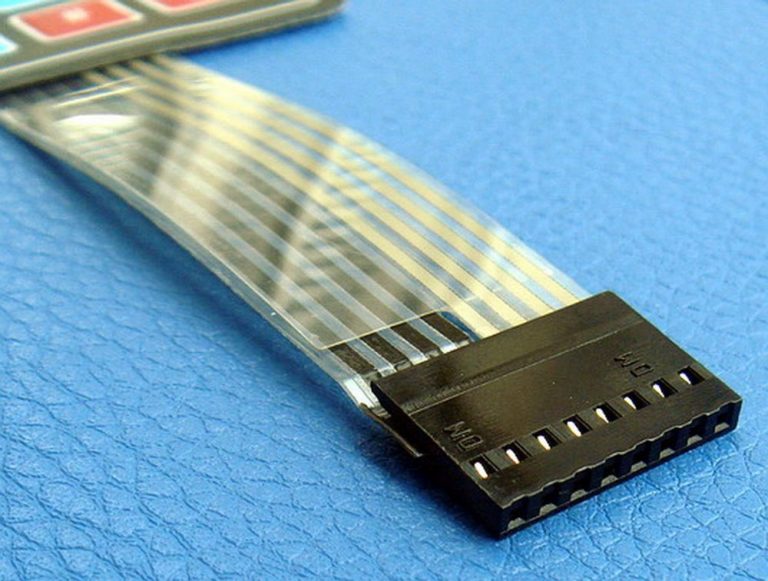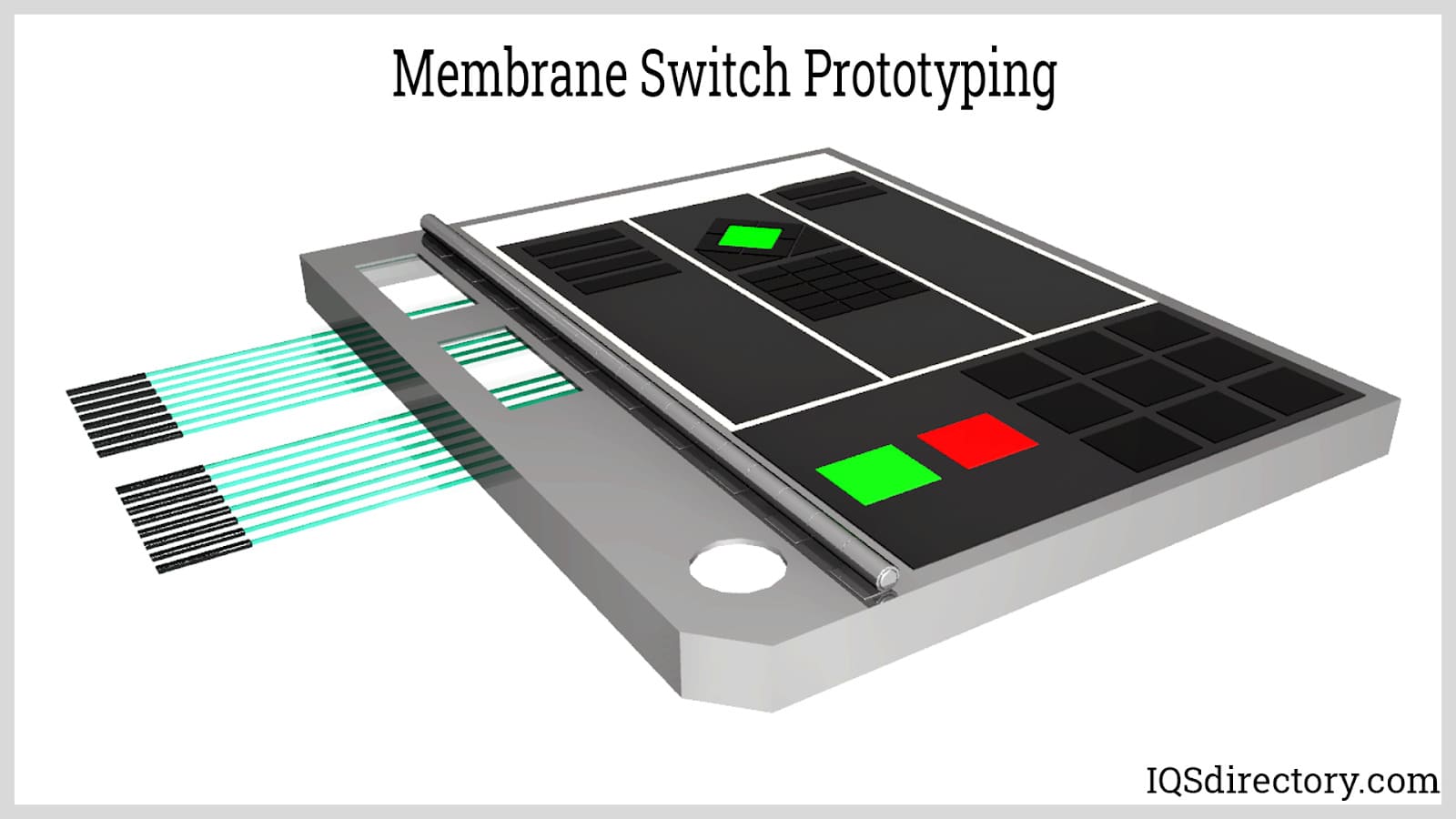Membrane Switches: A Cost-Effective Solution for Product Interfaces
Membrane Switches: A Cost-Effective Solution for Product Interfaces
Blog Article
Understanding the Relevance of Membrane Switches in Individual Interfaces
Membrane switches are essential elements in the design of efficient customer interfaces, facilitating not only performance yet additionally enhancing aesthetic appeal and individual communication. As we discover the future trends and various advantages connected with Membrane innovation, it comes to be clear that these buttons are extra than simply parts; they stand for a convergence of innovation and practicality.
What Are Membrane Switches?

The spacer layer, which has sticky buildings, permits the separation of the circuit layer from the overlay, guaranteeing that the switch continues to be in a non-activated state up until pressed. When pressure is related to the overlay, it compresses the spacer layer, bridging the void and finishing the circuit in the underlying layer. This style not only lowers the physical area required for traditional mechanical buttons however also boosts the toughness of the device, as Membrane switches are generally immune to dust, dampness, and various other environmental variables.
Typically found in applications varying from consumer electronic devices to medical tools, Membrane buttons are important to modern innovation, providing a straightforward and effective user interface that lines up with modern style needs.
Advantages of Membrane Switches
While many switch innovations exist, Membrane Switches offer distinctive advantages that make them specifically desirable in different applications. Among the primary advantages of Membrane switches is their small layout, which enables space-saving applications in devices where genuine estate is restricted. Their slim profile not just boosts aesthetic charm yet also helps with light-weight construction.
An additional significant advantage is their resistance to ecological factors. Membrane switches are commonly sealed against wetness, dirt, and impurities, making them perfect for use in requiring settings, such as clinical devices and industrial devices. This longevity expands the lifespan of the switch, decreasing upkeep expenses and improving integrity.
In addition, Membrane buttons can be customized to meet particular design demands, integrating special graphics and shades that boost customer communication. Their responsive responses alternatives can additionally be tailored to offer a satisfying customer experience. In addition, Membrane switches are affordable, especially in high-volume applications, as they can be generated successfully.
Applications in Various Industries

In the customer electronics field, Membrane switches are widespread in gadgets such as microwaves, washing makers, and push-button controls. Their responsive comments and aesthetic alternatives enhance customer experience while supplying a sleek, modern-day look. In addition, automobile manufacturers use Membrane buttons in control panel controls and infotainment systems, where room is limited, and customer interaction is critical.
Additionally, the industrial market leverages Membrane switches in control panels for equipment and equipment, permitting intuitive procedure in often extreme click environments. Their resistance to chemicals and wetness makes certain durability and integrity in these applications. Overall, the versatility of Membrane Switches contributes dramatically to their widespread use, making them crucial in different technical domains.
Design Factors To Consider for Membrane Buttons

When developing Membrane buttons, numerous vital considerations should be taken into consideration to make sure optimum functionality and user experience. The option of materials is vital; choosing long lasting, top notch substratums can improve the switch's durability and resistance to environmental factors such as moisture and temperature variations.
Second of all, the layout of the visuals overlay must focus on clearness and simplicity of use. Icons and message have to be understandable, and the design must help with intuitive interaction (membrane switches). In addition, responsive comments is important; incorporating a responsive dome or various other systems can enhance the customer experience by supplying physical confirmation of activation
Another vital aspect is the switch's electric efficiency. Designers must make certain that the conductive traces are appropriately developed to minimize resistance and stay clear of signal interference. This entails examining the required actuation pressure and making sure compatibility with the electronic parts they will user interface with.

Future Fads in Membrane Modern Technology
As innovation proceeds to advancement, Membrane switches are poised to advance substantially, driven by innovations in materials and making techniques. One arising fad is the consolidation of innovative materials, such as versatile substratums and conductive inks, which boost sturdiness and lower the overall weight of Membrane buttons. These products not only enhance the responsive feedback but likewise permit the design of switches that can stand up to harsher ecological problems.
Additionally, the combination of touch-sensitive modern technologies is changing traditional Membrane Switches into even more interactive customer interfaces. Capacitive touch sensing units embedded within Membrane switch panels can offer a much more instinctive and responsive user helpful site experience, aligning with the growing demand for smooth, contemporary styles in customer electronic devices.
In addition, innovations in printing techniques, such as digital and 3D printing, enable rapid prototyping and customization of Membrane switches. This flexibility allows manufacturers to respond quicker to market demands and go to the website consumer choices.
Last but not least, sustainability is coming to be a substantial emphasis, with suppliers discovering green products and procedures. As these patterns unfold, the future of Membrane modern technology assures boosted performance, aesthetic appeal, and environmental duty, strengthening their function in sophisticated user interfaces throughout numerous markets.
Final Thought
In final thought, Membrane Switches represent a vital element in the layout of individual interfaces, incorporating performance with visual flexibility. As improvements in technology continue, the advancement of Membrane switches is anticipated to further fine-tune individual interfaces, driving technology and improving functionality in an increasingly complicated technical landscape.
Membrane switches are important parts in the design of efficient customer interfaces, facilitating not only performance yet also enhancing aesthetic charm and customer interaction.Membrane Switches serve as an essential component in various individual interfaces, assisting in a smooth communication between users and electronic gadgets.While countless button technologies exist, Membrane Switches offer unique advantages that make them especially preferable in numerous applications.In addition, Membrane buttons can be customized to meet specific design demands, integrating special graphics and shades that improve individual communication.In final thought, Membrane Switches represent an important part in the layout of customer interfaces, incorporating capability with aesthetic versatility.
Report this page